Vietnam in review…
The Good
The food
Vietnamese cuisine usually includes varied fresh ingredients (including freshly made rice paper or noodles), lots of herbs, and interesting variations and combinations.
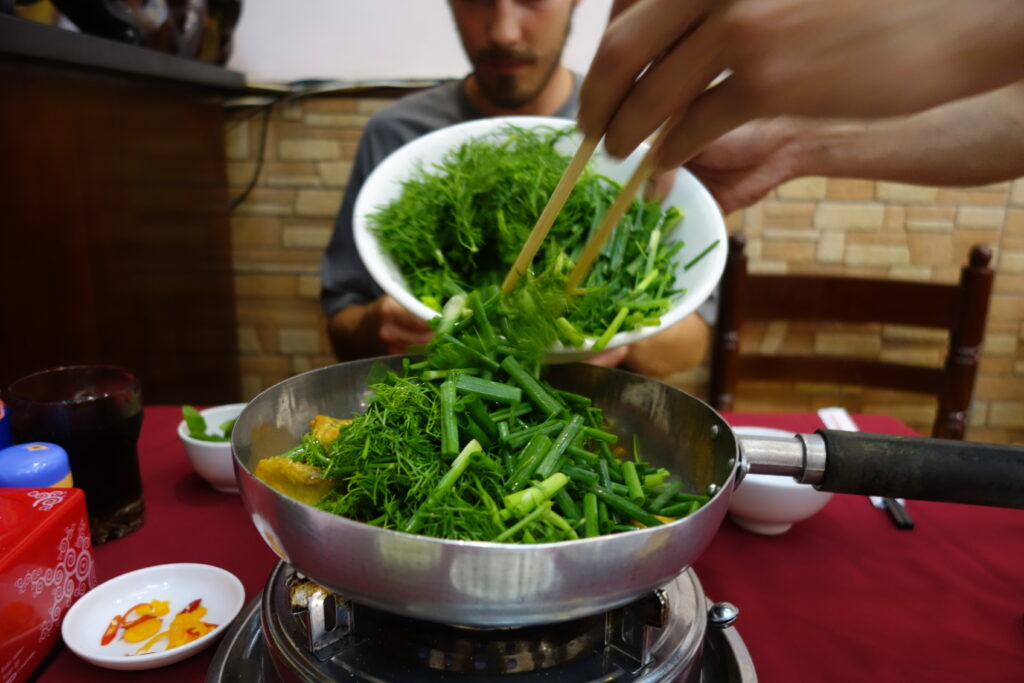
In particular, the imperial cuisine of Huế was really fun to sample. This cuisine is considered the pinnacle of Vietnamese gastronomy; simple ingredients are chosen for their yin and yang or ‘hot’ and ‘cold’ properties. The dishes are then are carefully prepared and elegantly presented. The royal cuisine of Huế was very innovative and arose to meet a demand for variety from the kings of antiquity. Many of the dishes take the form of small bite sized morsels which combine local favorites with international spices and flavors. Here are a few examples of our favorites:
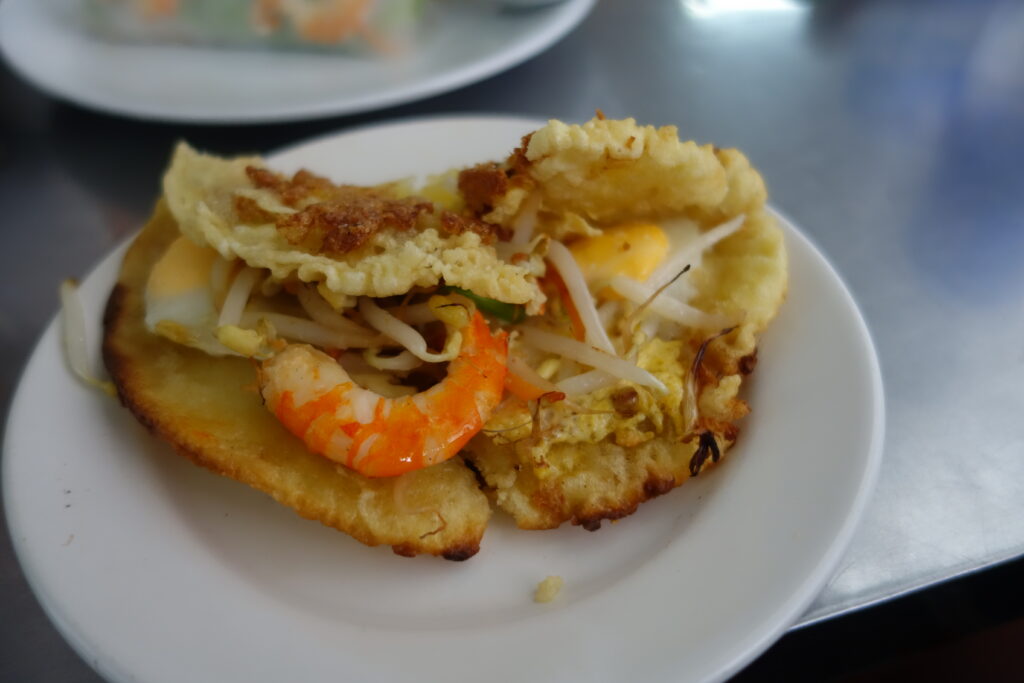
The coffee
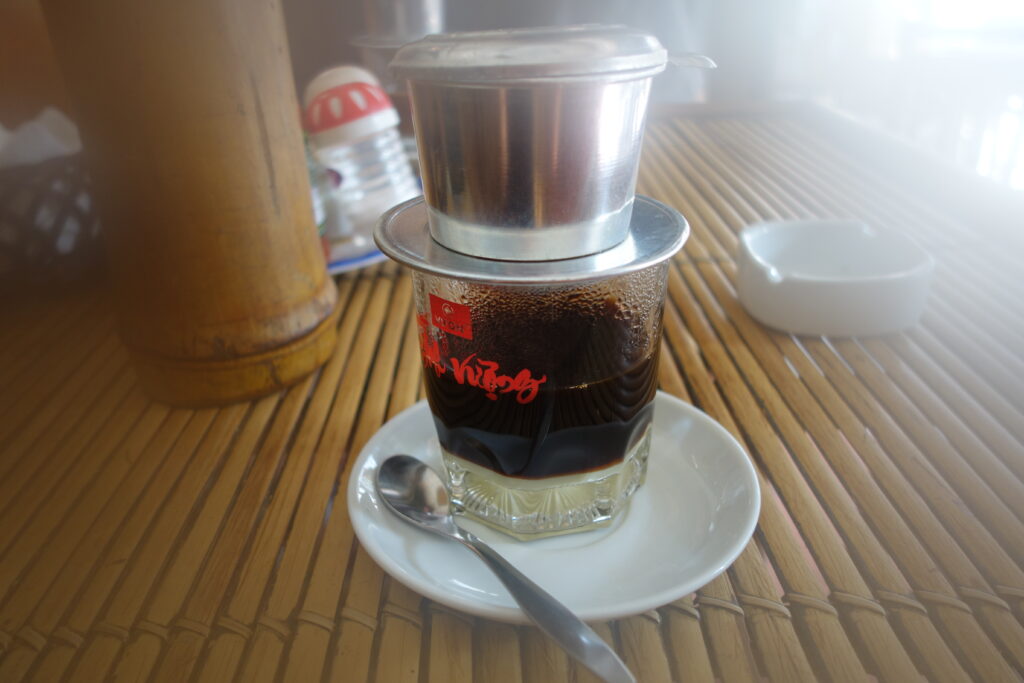
Vietnamese coffee is also deserving of its own paragraph. The coffee in Vietnam is brewed very strong, served in a small glass with sweetened condensed milk. Part of the reason why the coffee is served this way is that the coffee grown and produced in Vietnam is largely the robusta variety, which is more bitter and has more caffeine (almost 50% more!). The rest of the world is primarily drinking arabica coffee which is less bitter, has less caffeine, and naturally has more sugars (~2×) and lipids (~1.5×) in the beans. The additional sugars and lipids also contribute to generating a richer flavor during the roasting by forming a larger ensemble of flavor compounds. Because of the aforementioned qualities, this variety does not require sweetening and we can drink a big, but relatively weak, cup of it. In comparison, Vietnamese coffee is very rarely consumed without added sugar and fat. The coffee (with plenty of sweetened condensed milk) tastes strong but sweet, and tastes almost like chocolate – yum! Another variety of coffee which is particularly popular in Hanoi is cà phê trứng (egg coffee) which is served with a sweet, creamy, whipped egg white topping. This one tastes like a dessert.
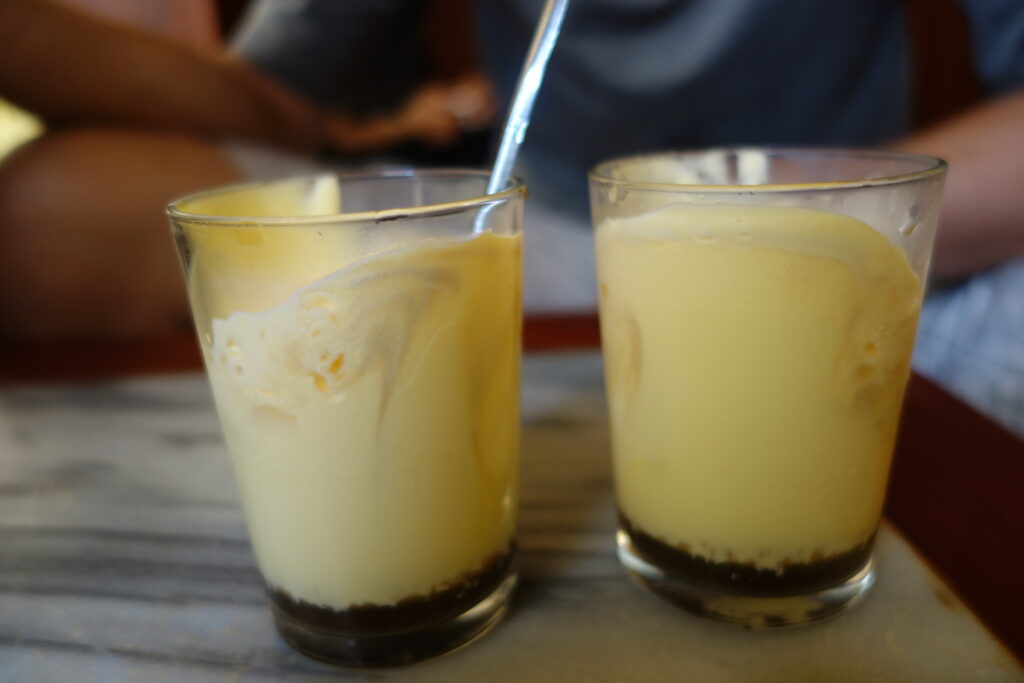
The beer
Vietnamese fresh beer, called bia hơi, is made fresh daily and distributed to restaurants and street vendors who buy just enough for the day. Due to its young age, the beer has a much lower alcohol content than standard beer and has a mild flavor. At local establishments, this fresh beer is 14¢ per glass! I think this may literally be the cheapest beer in the world. It doesn’t compete with a Wisconsin craft beer, but it is refreshing and quite affordable!
An interesting side note is that the price of the fresh beer was a useful measuring stick to judge how expensive a restaurant would be. Fresh beer for 3000 đồng (14¢) meant the food would be reasonably priced, 5000 đồng meant it would be moderately priced, and 8000 đồng meant the food would be above our budget – and was also a good indication the restaurant catered solely to westerners.
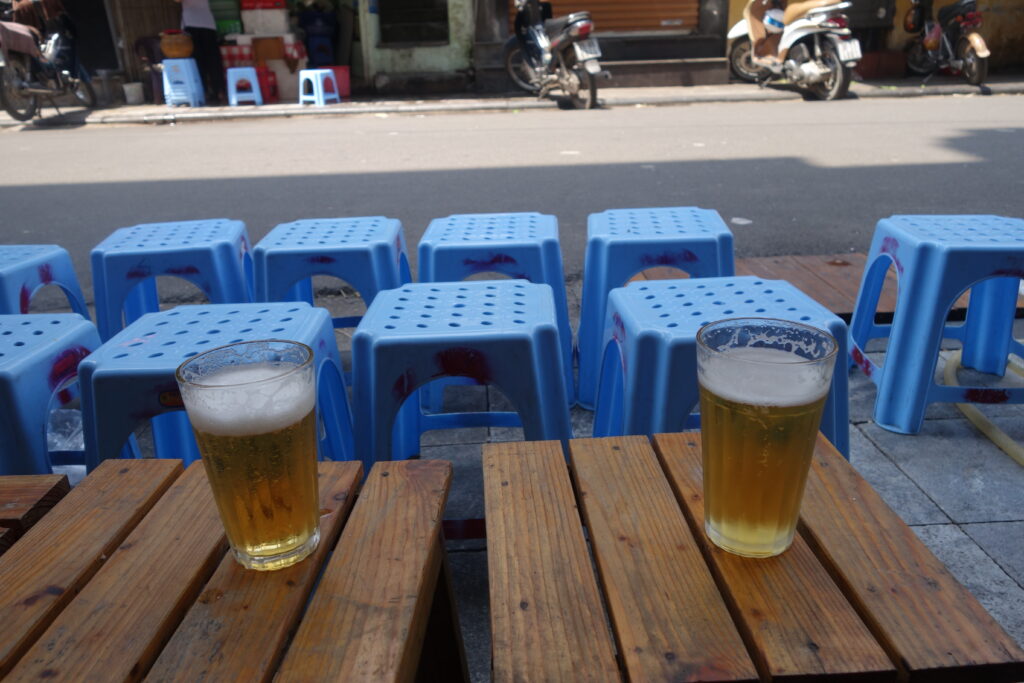
The cities
The cities were charming and generally had nice parks, nice museums, and were mostly kept clean. You could really see the progress being made in leaps and bounds. Many of the buildings were new or in good condition. The transportation infrastructure was just fine (nothing like Japan, but also so much better than The Philippines). The two largest cities we visited were Hanoi and Sài Gòn (Ho Chi Minh City) and we thought that both were quite pleasant for big cities! Hội An, one of the most touristy cities in Vietnam, was also a fun place to visit considering it was full of restaurants and shops aimed at tourists.
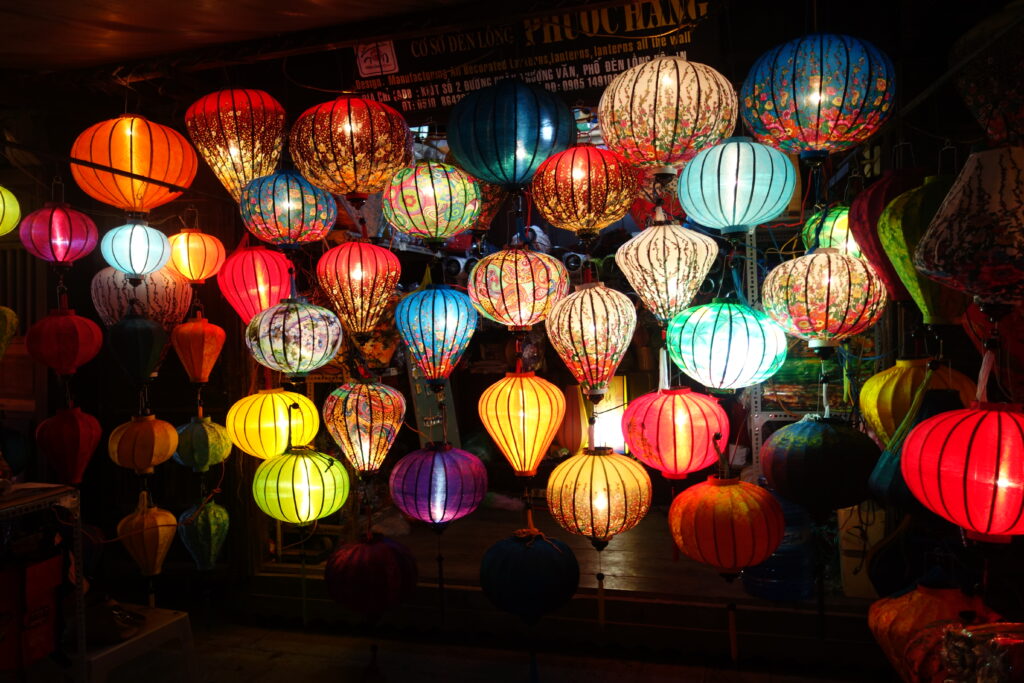
We also enjoyed the old imperial capitol of Huế. It was not only a place to sample great food but was also a culturally interesting place to visit the many royal tombs.
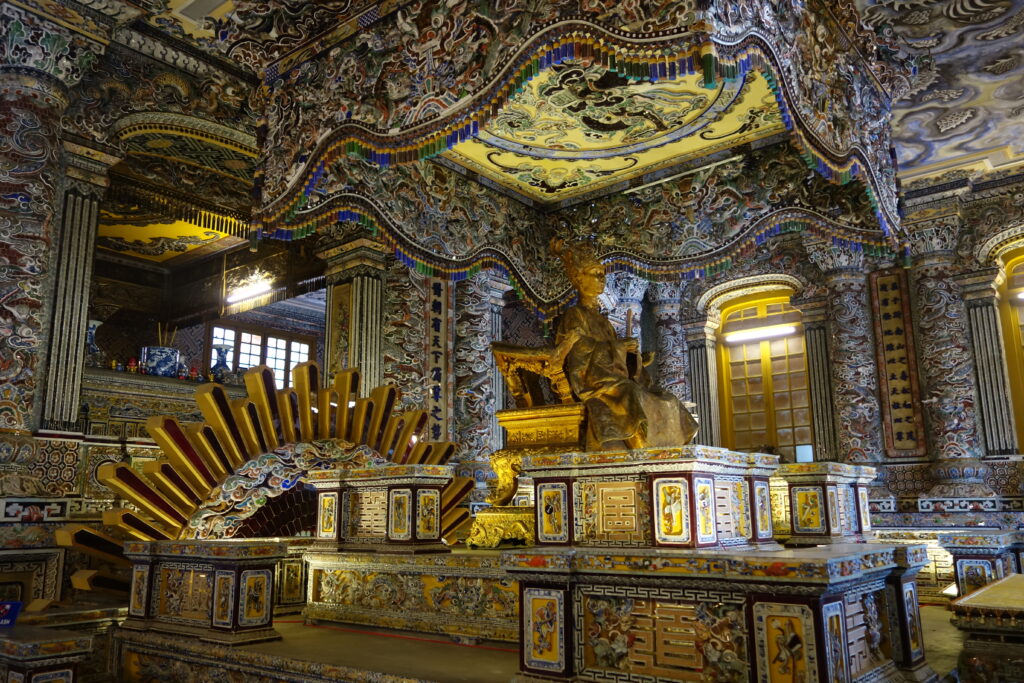
The atmosphere
The atmosphere of Vietnam is something that a person really falls in love with. When speaking with a Canadian expat living in Vietnam, we were told that Vietnam was the first country he had visited which he truly felt sad to leave – when the end of his trip came, he just didn’t want to go. Now he has been living in Vietnam for about 20 years. I can honestly relate. When our final day came, I was already thinking about all of the things I would miss.
The first thing one notices is the little stools, food vendors, and people everywhere. There are people sitting on plastic stools, stoops, or whatever is available and eating, drinking, or socializing.

There are also small businesses everywhere. You see people working on mopeds, welding, operating small scale moped wash businesses or little fuel and tire repair businesses.
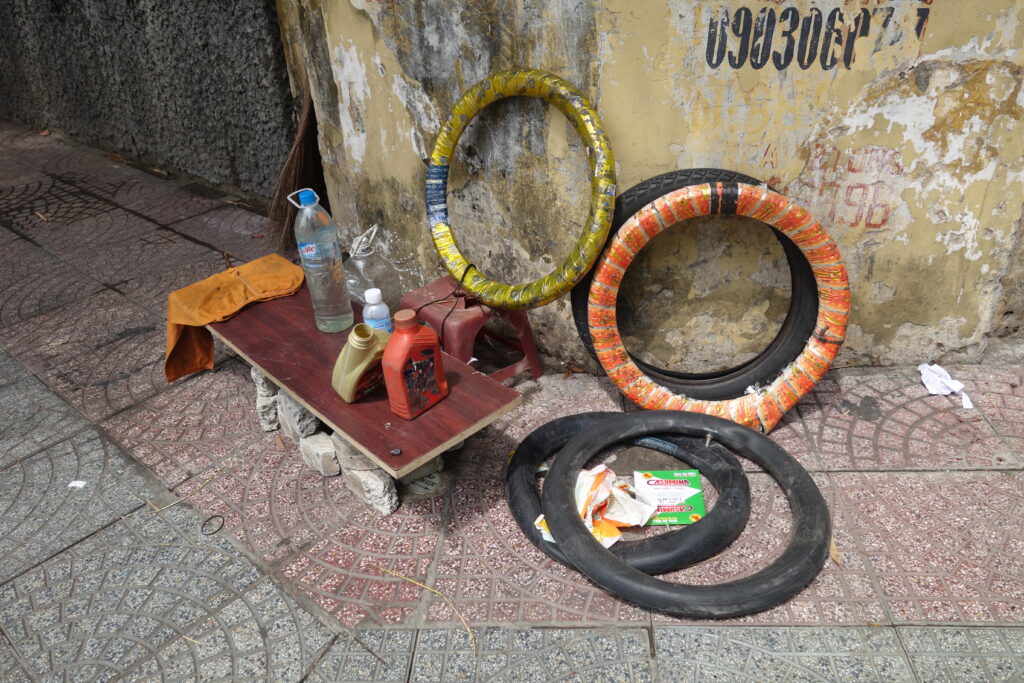
There is so much activity and everyone is outside hanging out (as long as it isn’t noon time, at which time they are all passed out on a mat taking a siesta).
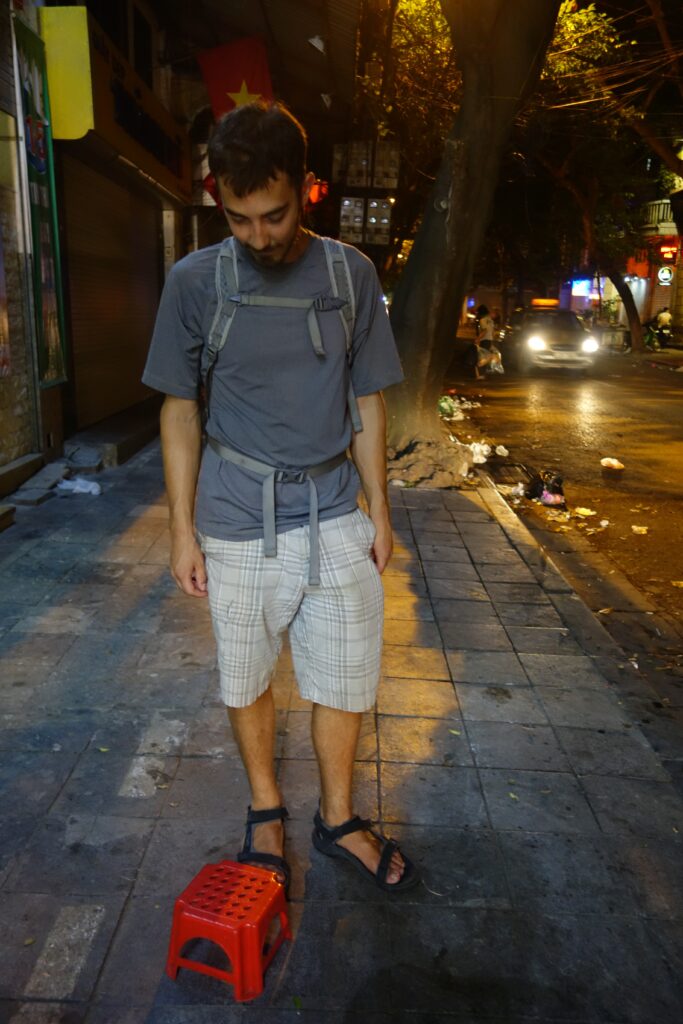
You also see older men playing Chinese Chess in the parks and really anywhere! They draw quite the crowd 🙂
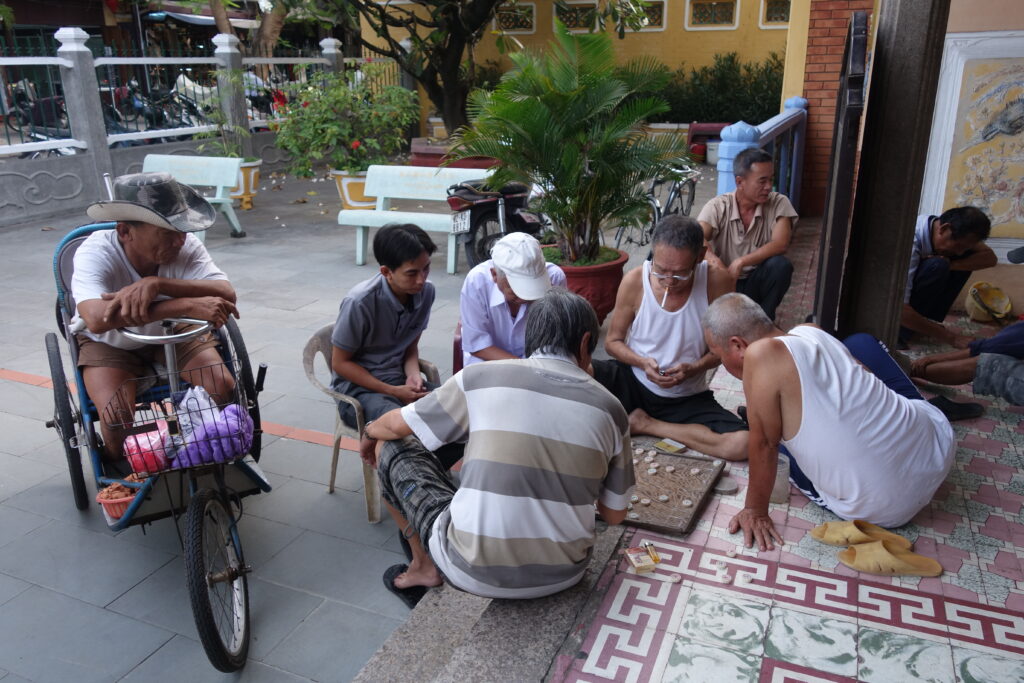
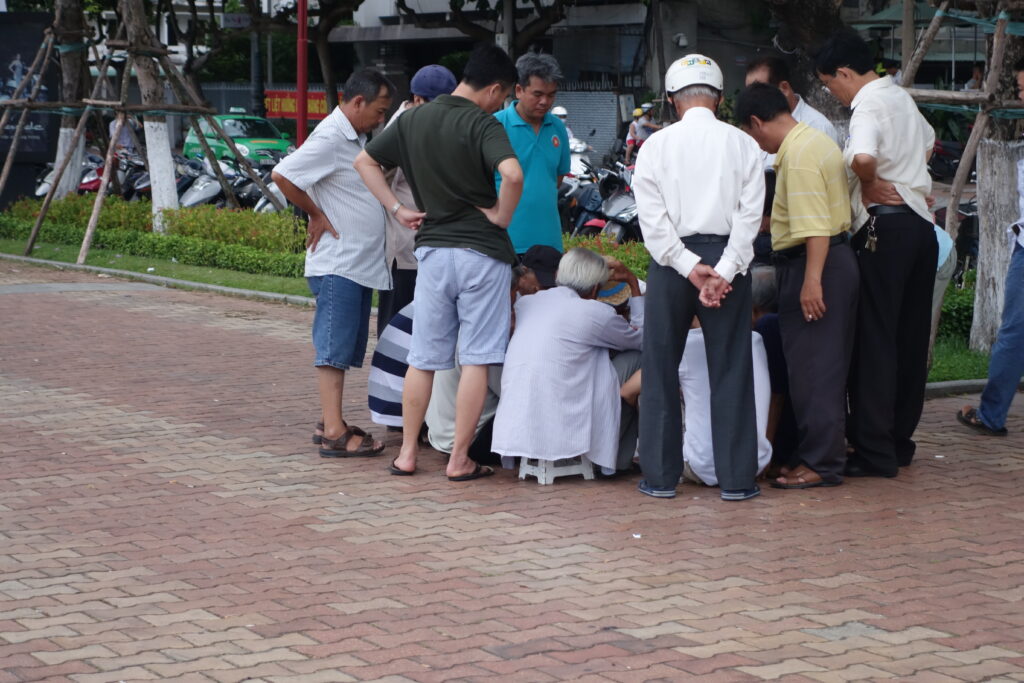
There are also traditional trades which are still practiced. We saw the process of making rice paper and rice noodles and even got to try it ourselves! We also visited a ship building site and the home of a mat weaving family.
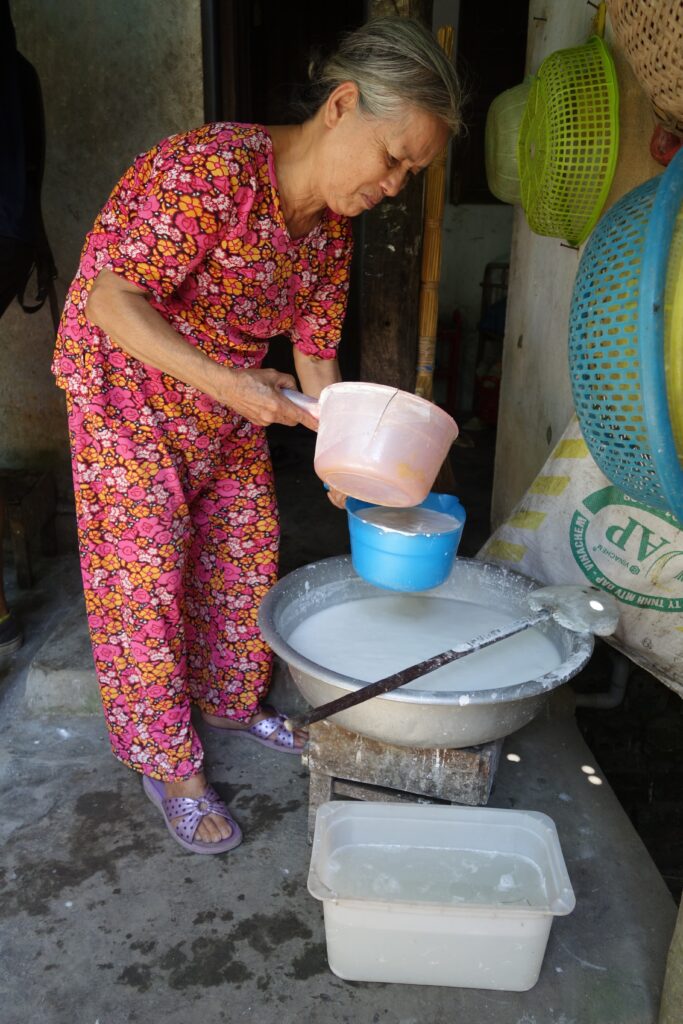
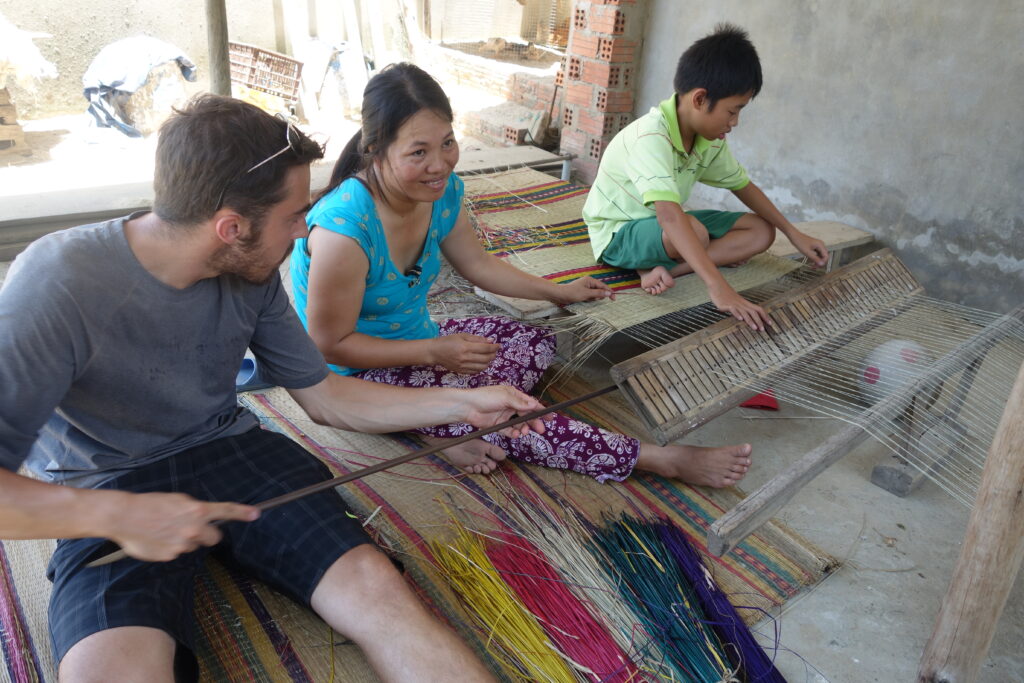
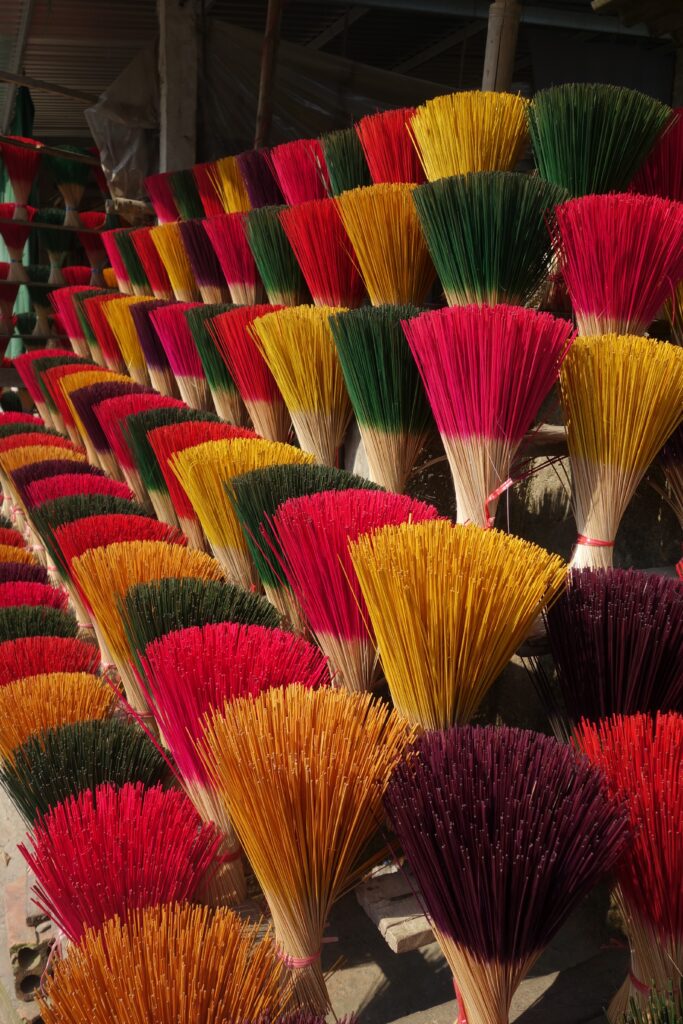
The markets are equally as interesting and fun! In particular, we found the floating market of Cái Răng in Cần Thơ to be vibrant and fun to watch. This is just one of many floating markets in the Mekong delta area. There were boats filled with pineapple, watermelon, root vegetables, cabbage, etc. and people throwing produce from one boat to another. The vendors would display what they had for sale on tall poles, so that they were visible at a distance. We’ve included a video we took below.
Natural Beauty
We didn’t experience as much of the natural beauty as we were originally planning on (it turns out it is incredibly hard to get out to the national parks in Vietnam if you don’t drive a motorcycle). We prioritized our travels based on distance, staying out of malarial zones, and not traveling to places with a similar landscape to those which we have already seen (Sapa is similar to Batad and Ha Long Bay is similar to El Nido). That being said, the natural beauty of Tam Cốc and the area around Ninh Bình was really breathtaking. It was so much fun just to bike around or take a boat and admire the limestone rocks jutting from the earth surrounded by lush green rice fields.

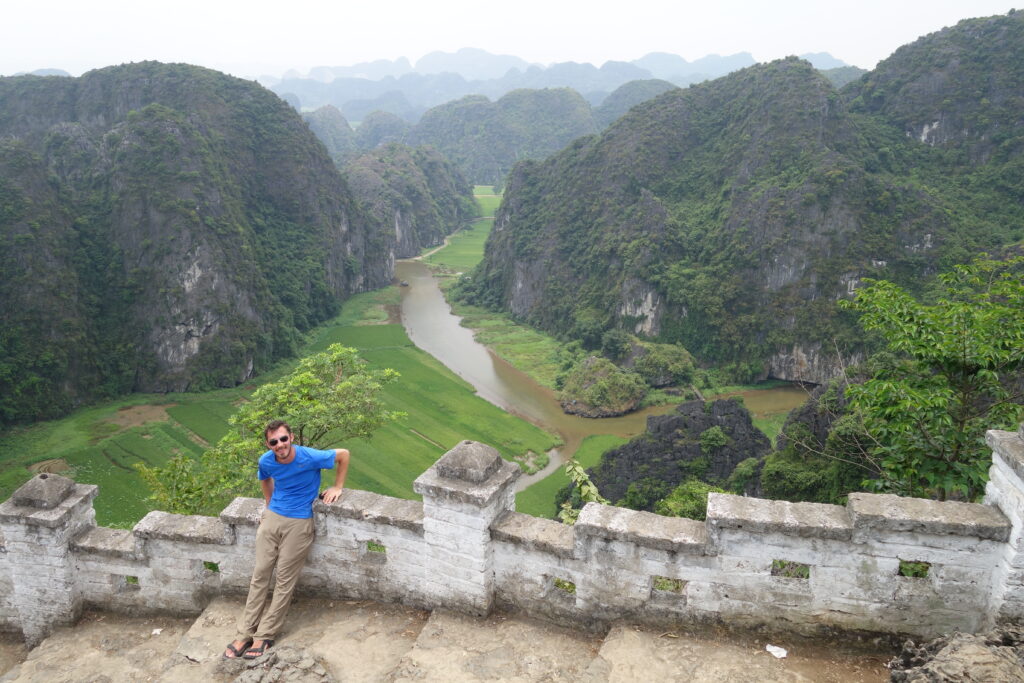
The Bad
Traffic
The traffic in Vietnam is crazy. It doesn’t seem to follow any rules; drivers drive wherever they feel like it / where ever it is convenient to drive, which often means the wrong side of the road!
For example, if a driver doesn’t have far to go, or is waiting for traffic to clear enough to cross the road, they will often drive the wrong way on the shoulder of the road. Or, they will slowly drive into oncoming traffic, (which anticipates the movements of the driver going the wrong way and naturally moves to the sides) carefully moving further to the right until making it to the proper side of the street. Crossing the street here works similarly – you move slowly and steadily and the traffic will move around you. It is actually quite simple once you get the hang of it – it just takes a good bit of nerve! You can see pedestrians crossing the street and a motorcyclist crossing by driving into oncoming traffic in the later part of the video.
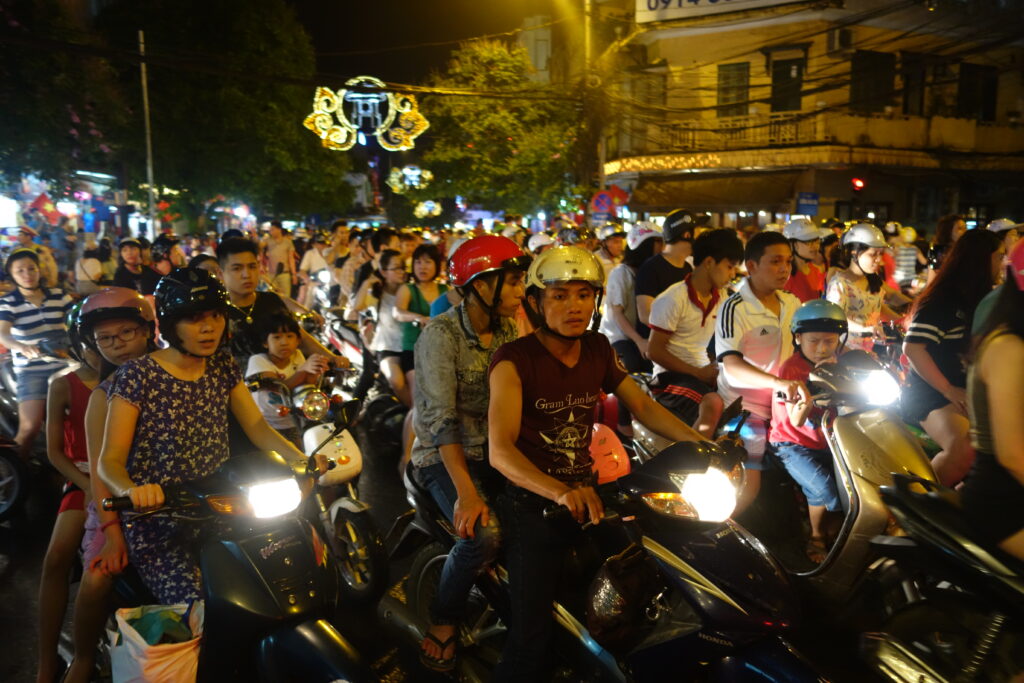
There are mopeds everywhere! Because there are so many mopeds and there aren’t usually designated parking areas, the sidewalk is a moped parking area. Most of Vietnam has spacious sidewalks, which was a nice change from Korea, Japan, and The Philippines. Unfortunately, pedestrians still end up walking in the street most of the time because the sidewalk is a free for all. It is full of mopeds and sprinkled with street vendors (which have their own little plastic stools scattered about), and people doing various work. Being a pedestrian is a perilous activity in Vietnam. This seems to be a recurring theme in the developing world.
Scams, “tips”, and sales techniques
We will go into more detail about the varied scams of Vietnam in another post, but for now I will just say that there are quite a few common scams and if you are aware of them, you can usually avoid being scammed.
Even being aware of the common scams, it is difficult to avoid paying ‘tourist prices’. It is the norm for locals to ask non-Vietnamese people to pay 2-5 times the normal asking price of an item. If you are aware of the price the item should be, you can usually negotiate to pay somewhere in between the local’s price and the foreigner’s price but it is almost impossible to pay the local’s price. We don’t mind paying a little bit extra, but it is pretty annoying feeling like you always have to know what something should cost or be on guard so that you don’t totally get ripped off. The haggling can actually be fun if you know what you want to pay / what is a good value to you. And the stakes are usually low, so even though we “got ripped off” by a sugarcane juice seller who sold us the juice for $1 when it should have been 25¢, we still only overpaid by 75¢ ( 25¢ is the local people’s price and 50¢ is the standard tourist price). It’s worth noting we would have gotten the standard tourist price but she refused to make change after we paid (another common scam). We stocked up on all sizes of bills to make sure we wouldn’t be vulnerable to this again.
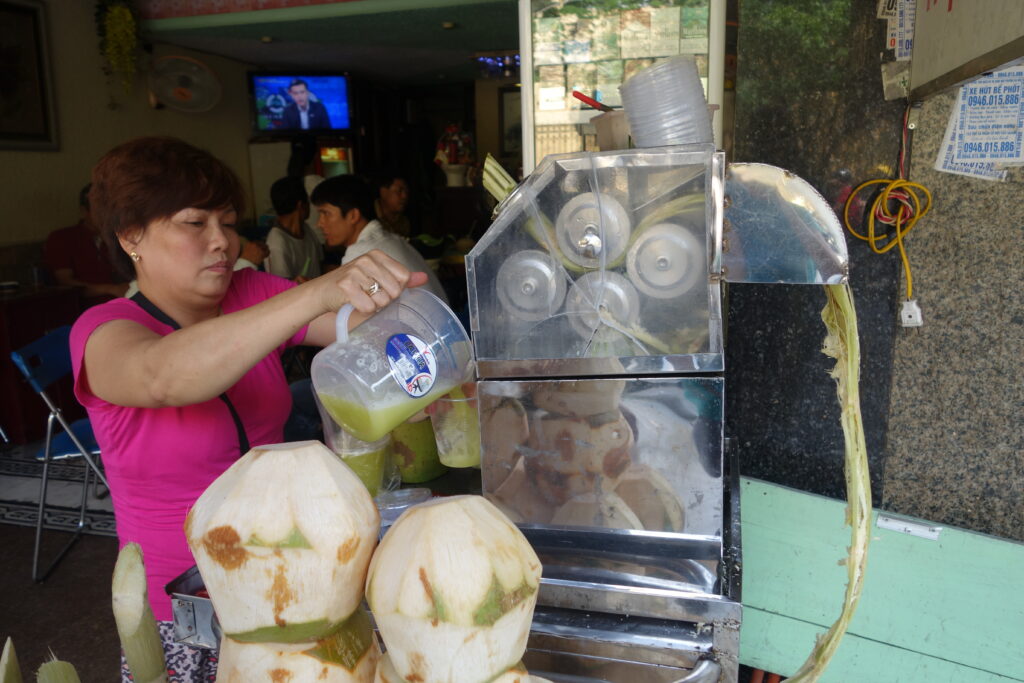
Along with tourist pricing there are tourist tactics, and they are regionally specific. In the touristy areas in the big cities, the street vendors will straight up refuse to give you a reasonable price on an item. This was really frustrating. They will ask an insane price, knowing that some schmuck will come along and pay their asking price. In touristy Hoi An, the tactic is to befriend you and make you feel sorry for them. The vendors will say hello, ask you where you are from, how many days you are traveling, etc., then they will tell you that you are the first customer that they have had all day. They will beg you to buy something, sometimes grabbing your arm and almost refusing to let go. These vendors are more flexible and can be bartered with, but they too begin with a much higher price than is reasonable and make you feel horrible for not buying anything. Having a teammate (Jon) to help play good cop bad cop was helpful here.
Another related annoyance is the idea of a ‘tip’ in the tourism industry. A tip in Vietnam is more like an extortion. Here is an example: We paid $5 per person to enter a bird sanctuary/park area in Ninh Binh. Included in the entry price was a boat ride through a cave. We had a nice little 10 or 15 minute boat ride and were really enjoying ourselves. Our boat driver didn’t really speak English, just a few words, but it made for a peaceful trip. As we exited the cave she paddled us off to the side, stopping short of the disembarkation area and said “tip, tip”. We were already planning on giving her a small tip (even though tips are not customary in Vietnam and local people do not tip) and so we said yes we would tip her. She then said that she wanted 100,000 đồng ($5). Jon had what we intended to tip – $1 – ready, which he gave to her. She shook her head no and continued to ask for 100,000 đồng. We had to firmly insist before she finally gave in and rowed us back to the disembarkation point. As soon as she realized that was the maximum tip we were going to give her, she immediately went back into friendly mode and thanked us. So it was clear it wasn’t a matter of us shafting her, it was her tactic to intimidate people into a larger tip, but was still happy with a dollar. The tipping ordeal really left a sour taste in my mouth; she turned a perfectly nice boat ride into a really awkward argument. Unfortunately, this tip demanding activity, where the boat driver holds you hostage until you tip them is a somewhat common for the area.
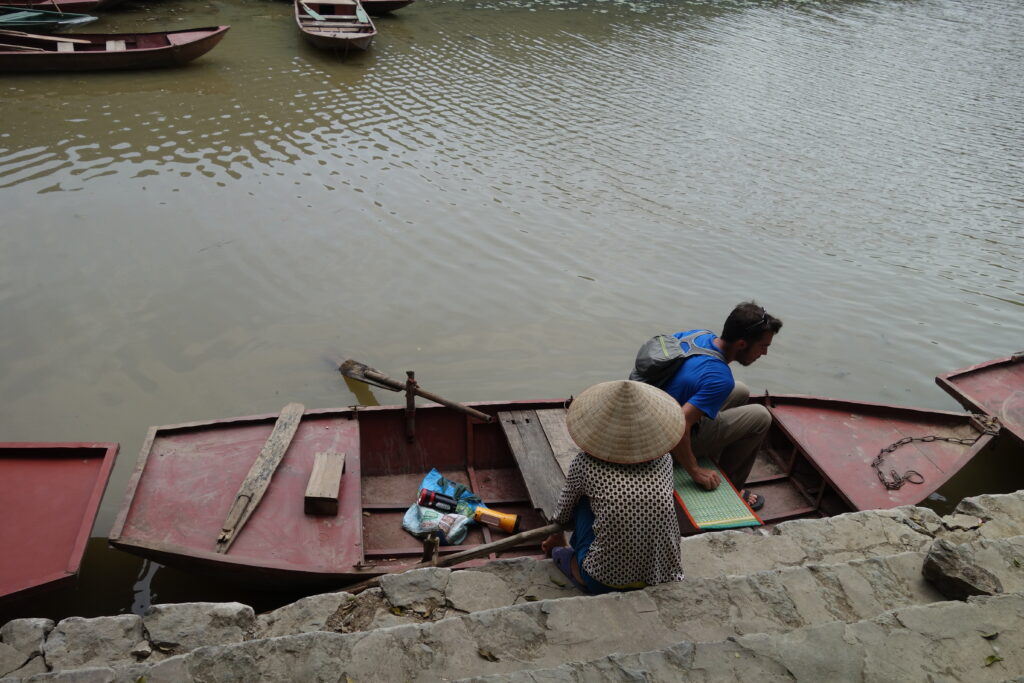
Copycat culture
Another annoyance was the prevalence of copycats. Vietnam has no trademark laws (or at least irregularly enforces them), so if a business has done well and has made a name for itself, many others (sometimes dozens) will copy its name and parasitize its reputation. It can be difficult to find reviews of a place when so many places share the same name. Furthermore, it can be difficult to figure out which one is the original. One day in Hanoi we were looking for the restaurant Xôi Yến at 35b Nguyễn Hữu Huân Street. There were two restaurants, with the same exact name and the same address right next to each other. Luckily, they both served the same dish which we had come to eat. But frustratingly, we had a difficult time figuring out which one was the (highly recommended) original and which was the copycat. We wound up eating at both just to make sure. 🙂
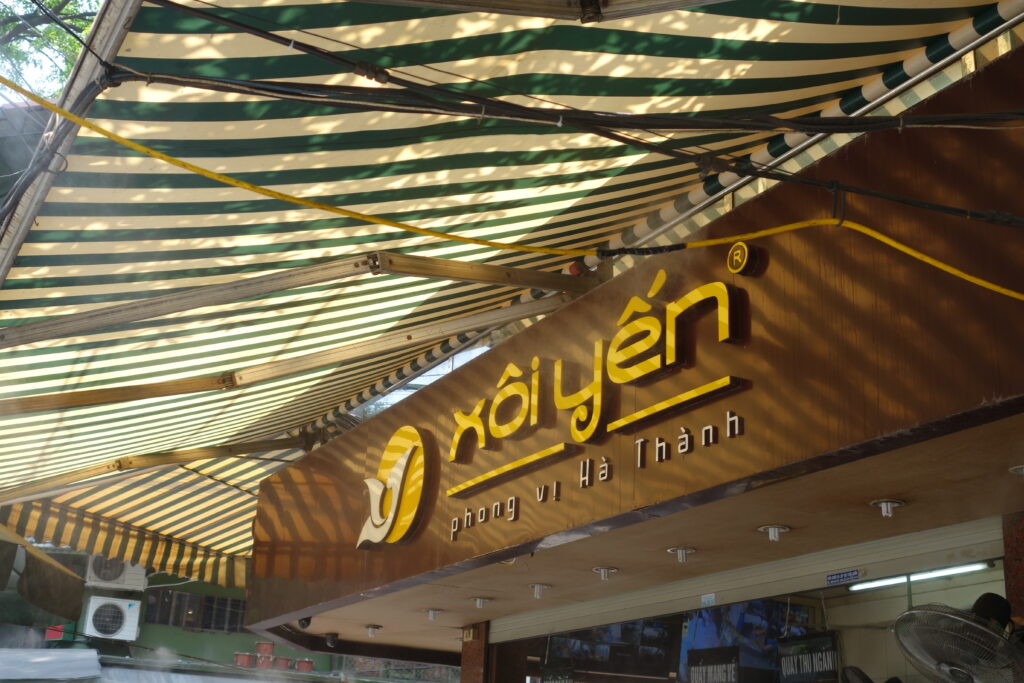
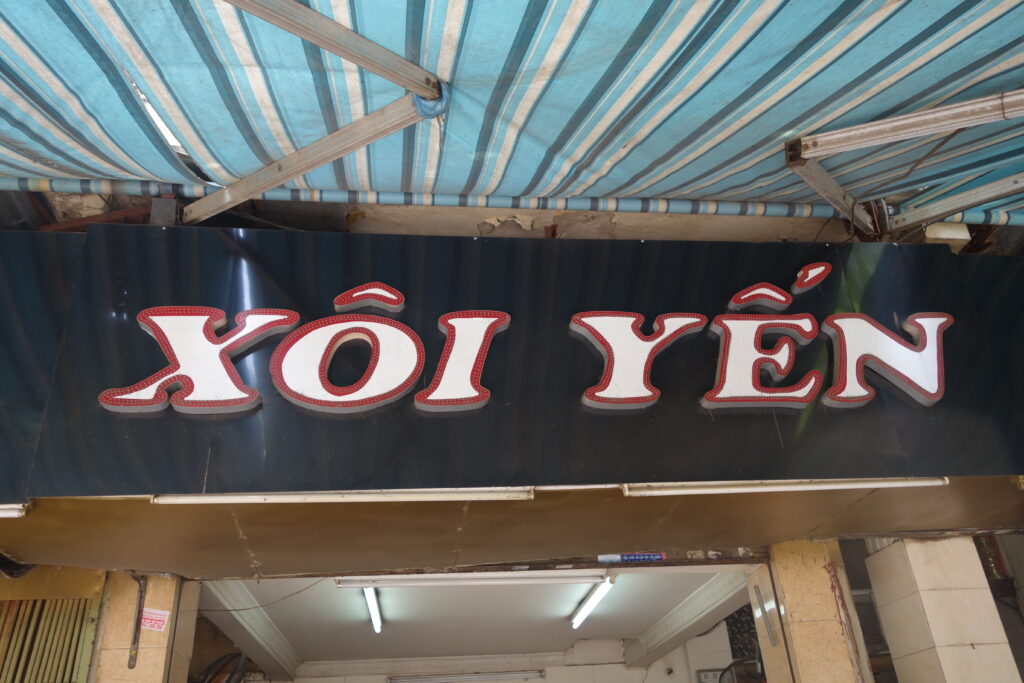
A related scam is that scammers will set up temporary hotels which copy the name of a popular hotel or hostel. Then taxi drivers who are in on the scam will take people from the airport to the fake version of the hotel. Upon arrival the fake hotel will claim that they have recently moved locations. The scam is profitable because the fake hotels that people are brought to are super run down and shoddy compared to the one they are impersonating and are often in a cheaper part of town.
Garbage & filth
Even though the garbage is dealt with more efficiently in Vietnam than in the Philippines, it was still really frustrating to watch street vendors throw their trash on the ground or in a nearby lake or river. I also watched a woman open the front door of her house and throw a bag of garbage across the street. The bodies of water here were nasty! (Jon comment – not compared to Manila!) Furthermore, knowing where the boat sewage, train sewage, and sometimes even the sewage of a home or business emptied was often information that you wanted to un-know as soon as you made a discovery… For example, we heard the beach restaurants in Na Trang run their drainage pipes right down to the beach where the sewage is dumped right next to a public beach!
The Quirky
Queuing
Vietnamese people do not like to queue. If you are ever in a situation where you need to get in line in Vietnam, be wary. Everyone else will just push to the front, go around, or do whatever is necessary in order to not wait. This means that if you choose to wait patiently, it will never be your turn.
Songbird obsession
Vietnamese people love songbirds! Many shops and businesses had songbirds displayed in a cage out front. I was pointing one out to Jon and an elderly man got our attention and pointed up above him to his bird as if to say hey come admire my bird too! We even saw a songbird enthusiast meet up at a cafe. The idea is that enthusiasts come to show off their birds and to expose their birds to other birds so that they can learn new songs.

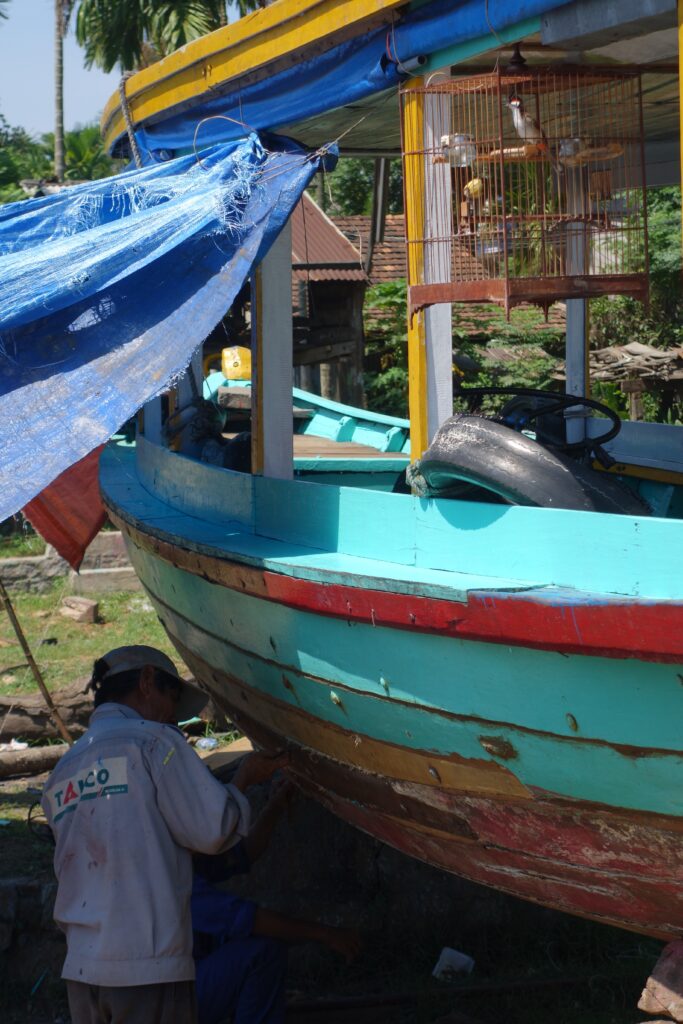
Feet
People like to get comfortable here. Seriously. It is not uncommon for people to take off their shoes or sandles and kick up their feet. They may even place their feet on your armrest or your chair. I am a convert when it comes to taking off my shoes on a long bus ride – it is just too hot to wear shoes and too bulky to put my hiking shoes in my pack. But I still think it’s rude to put your feet on someone else’s seat.
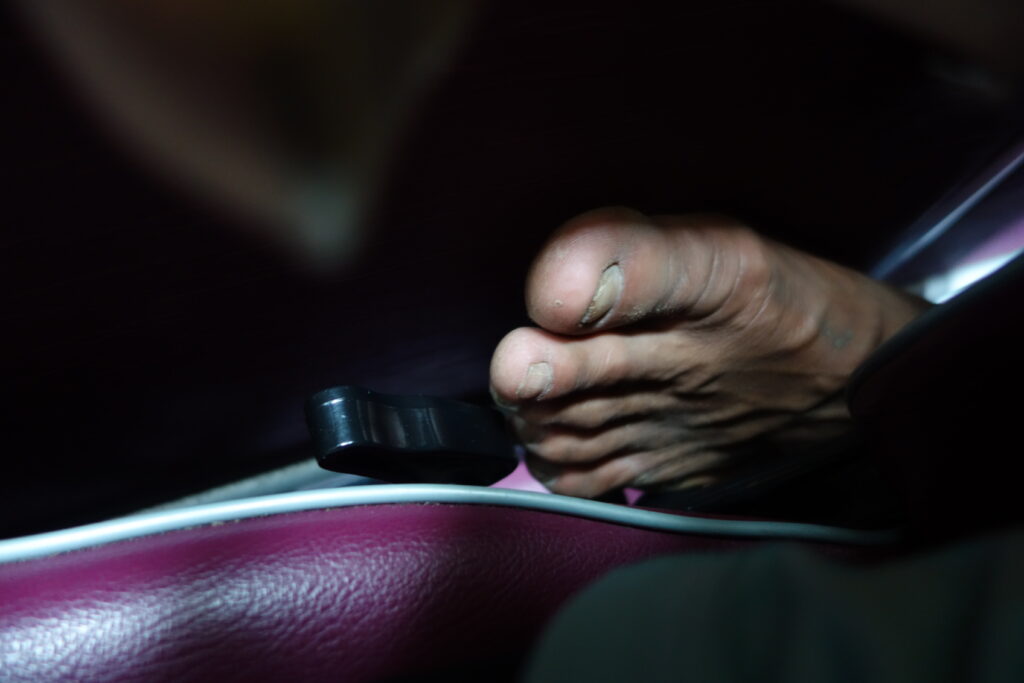
Attire
Most of the Vietnamese wear floral patterned (often matching) shirt and pant outfits. They also wear floral sweatshirts which are designed to keep the sun off their skin. The jackets have a hood and flaps to cover the hands (and elastic to connect the flaps to the hands). They often wear matching cloth face masks. The street vendors usually wear the stereotypical conical hats to keep the sun off their necks and faces.
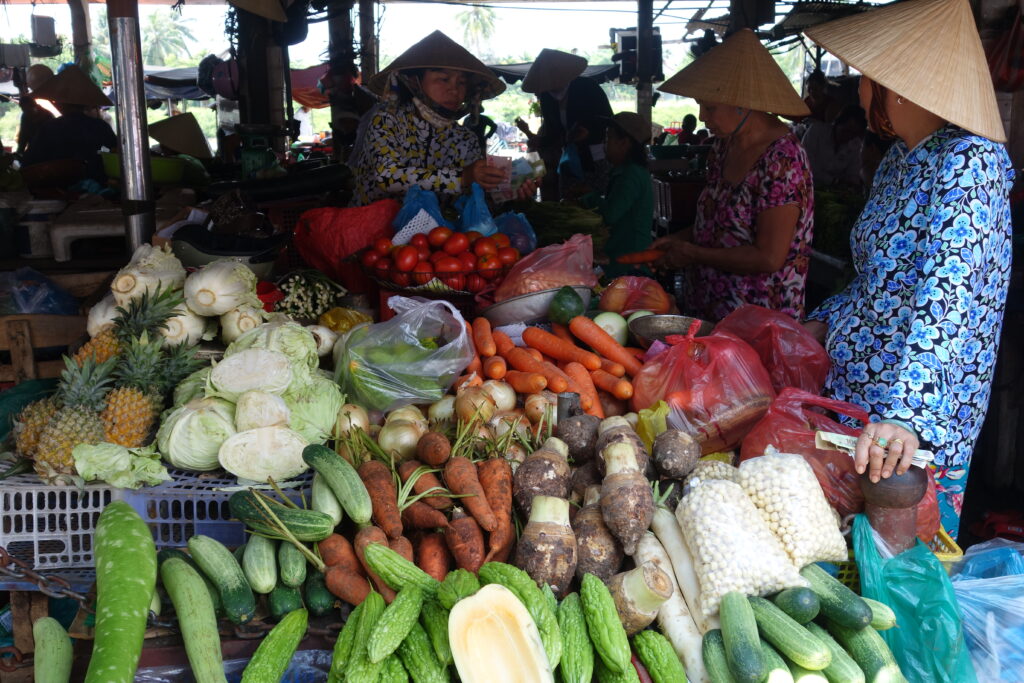
Drying Items
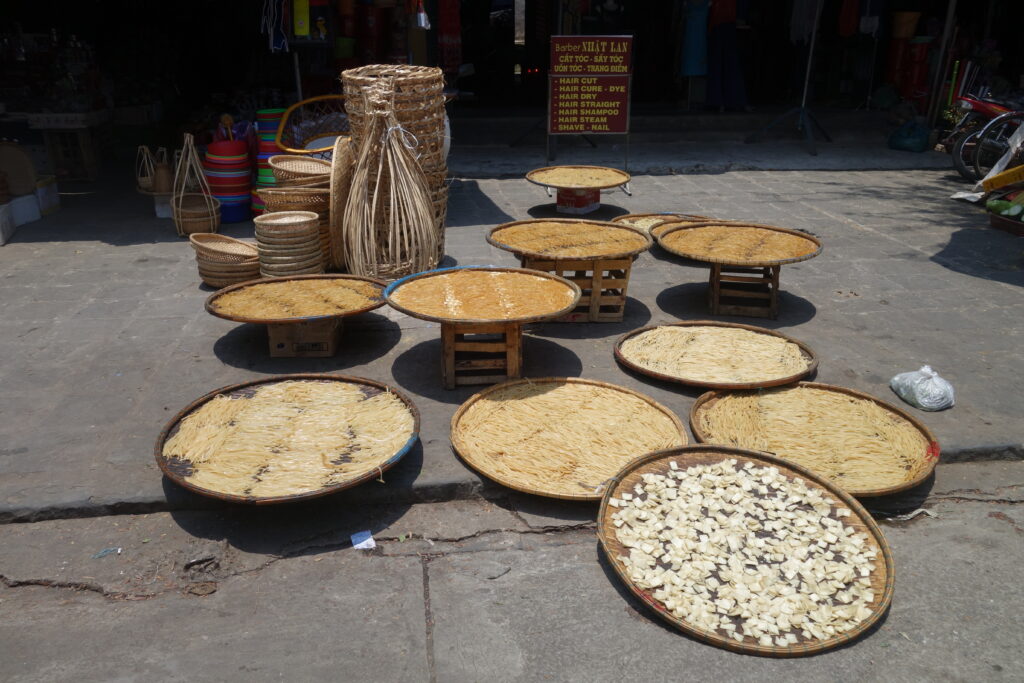
If you are in Vietnam and you notice items laying out on the pavement, it must be the noon hour! We have seen many things out to dry in the sun – chilies, seafood, rice paper products, corn, grass (used to make mats), and coconuts. Sometimes the items are in circular woven trays and sometimes the items are laid directly on the pavement of the sidewalk or the street.
Use of space
Even in more rural areas with plenty of open space, most of the buildings were three to five stories tall but very narrow. This is a sensible shape for a building in a city, but it was strange to see out in the countryside. Perhaps since most buildings in Vietnam are shaped like this it is cheaper to build this way? Or perhaps land is so expensive that the cost of the land is a bigger factor in the overall construction than the cost of the construction? Nothing bad about it – it’s just strange coming from the U.S. where buildings in rural areas are usually one or two stories.
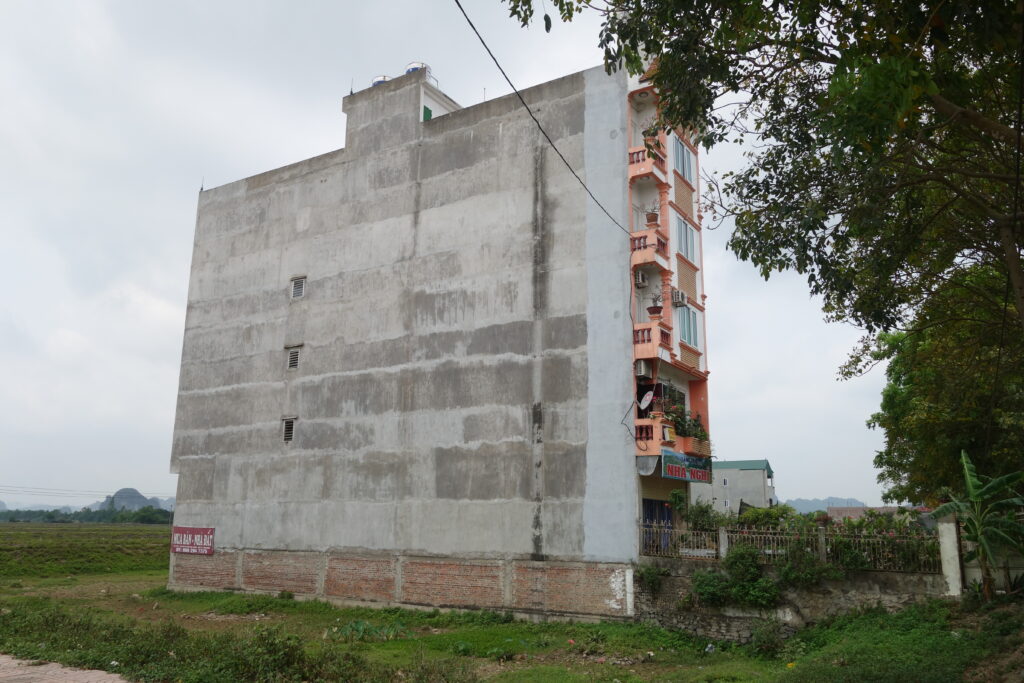
All in all, we had a great time in Vietnam and felt there was still much more to explore when we left.
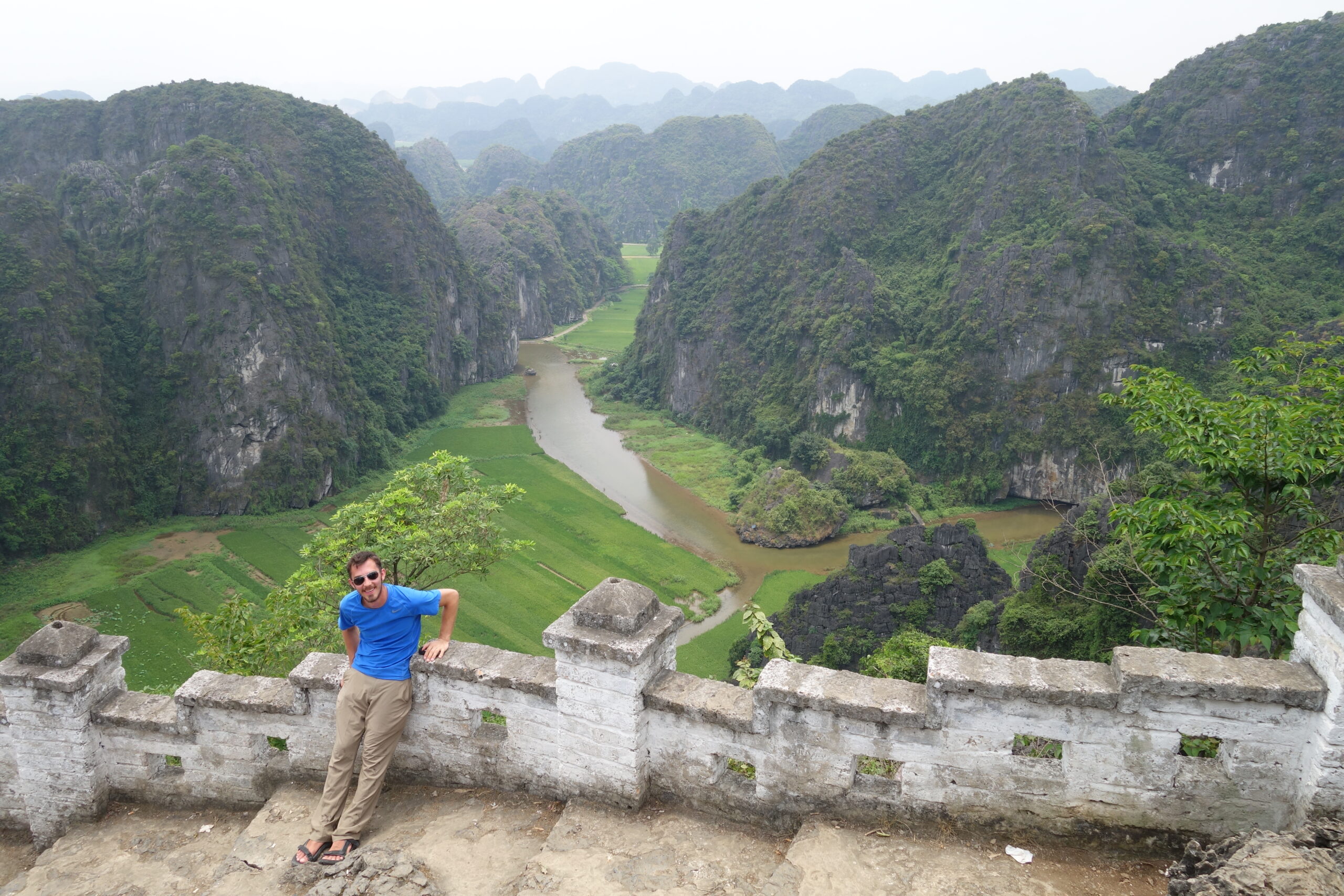

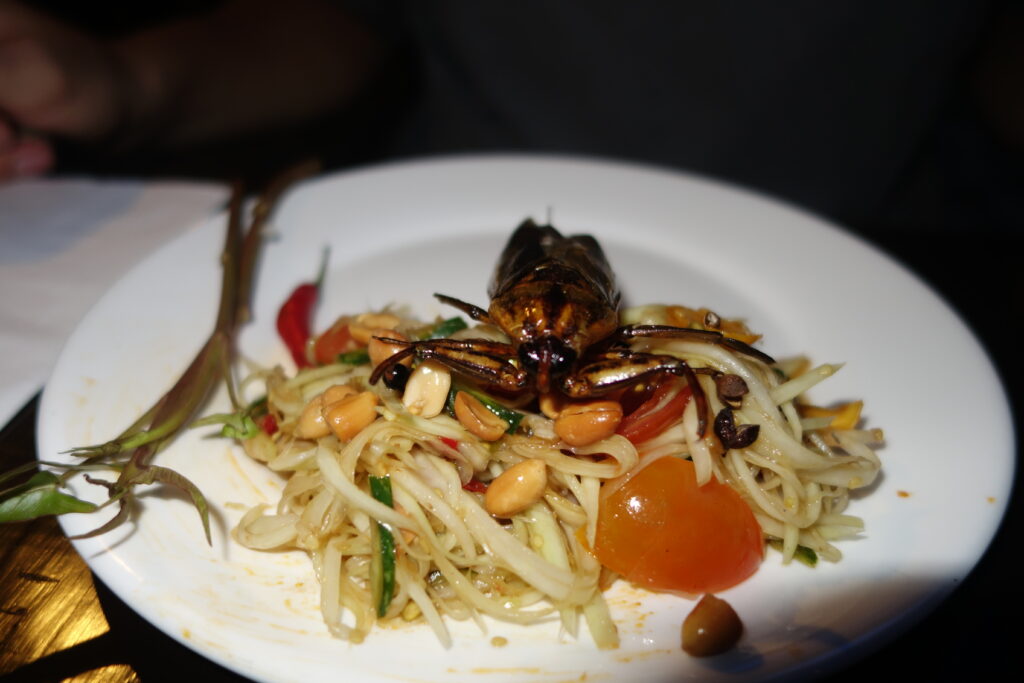

Thanks, Amy. I really enjoy “the good, the bad and the quirky” blogs.
P.S.: I’m sure glad US tour boats don’t require you to pay a “tip” equal to the fare just to get to shore.
I remember the lack of “queing” in Kowloon. Nobody was bothered by it there as it was just their way of life, but coming from the “Deep South” it was a bit mind boggling. I wish I had been to Taiwan and Kowloon while I was still in college (Chaminade of Honolulu). It would have made some of the “ways” of some of my classmates more understandable. I still loved them, though 😉
Hey guys,
Steph and I have been loving your posts! Keep them coming. You’re like the Rick Steves of Asia, and that’s what we like about your blog. It’s more than a narrative about your travels, you provide a lot of cultural and historical background, which is awesome! We miss you!
I second Kim’s love for these posts! Super fun and intriguing to read different aspects of these places.
Also, loved the videos! Please do more of those! Great quality, too. Were they taken on your phones or with your camera?
The foot photo on your seat made me laugh out loud, Amy.
And I loooove the songbird thing! It’s really sweet to imagine the working class of Vietnam tilling alongside their musical, avian friends 🙂
The videos were taken with our camera. I’ve edited in a few extra relevant ones to this post. We’ve also uploaded a few videos we’ve never linked here: https://www.youtube.com/user/jonwedell
Thanks for the comments guys (and thanks for reading)! For all of the annoyances and quirks of Vietnam, I don’t have any lingering hard feelings 🙂 More than anything, it is just interesting to see how other cultures behave and live their lives. And Katie, I totally agree with regards to the songbirds. I think it’s sweet how much they care about them and care for them (moving their cages around during the day so that they get a mixture of sun and shade, taking them to bird play dates, etc.). The darker side of the songbird obsession is the fact that the Vietnamese people eat wild songbirds (a fairly common street food), so the native songbird populations are dwindling. I wish they’d funnel that passion towards protecting and caring for the wild songbirds as well.